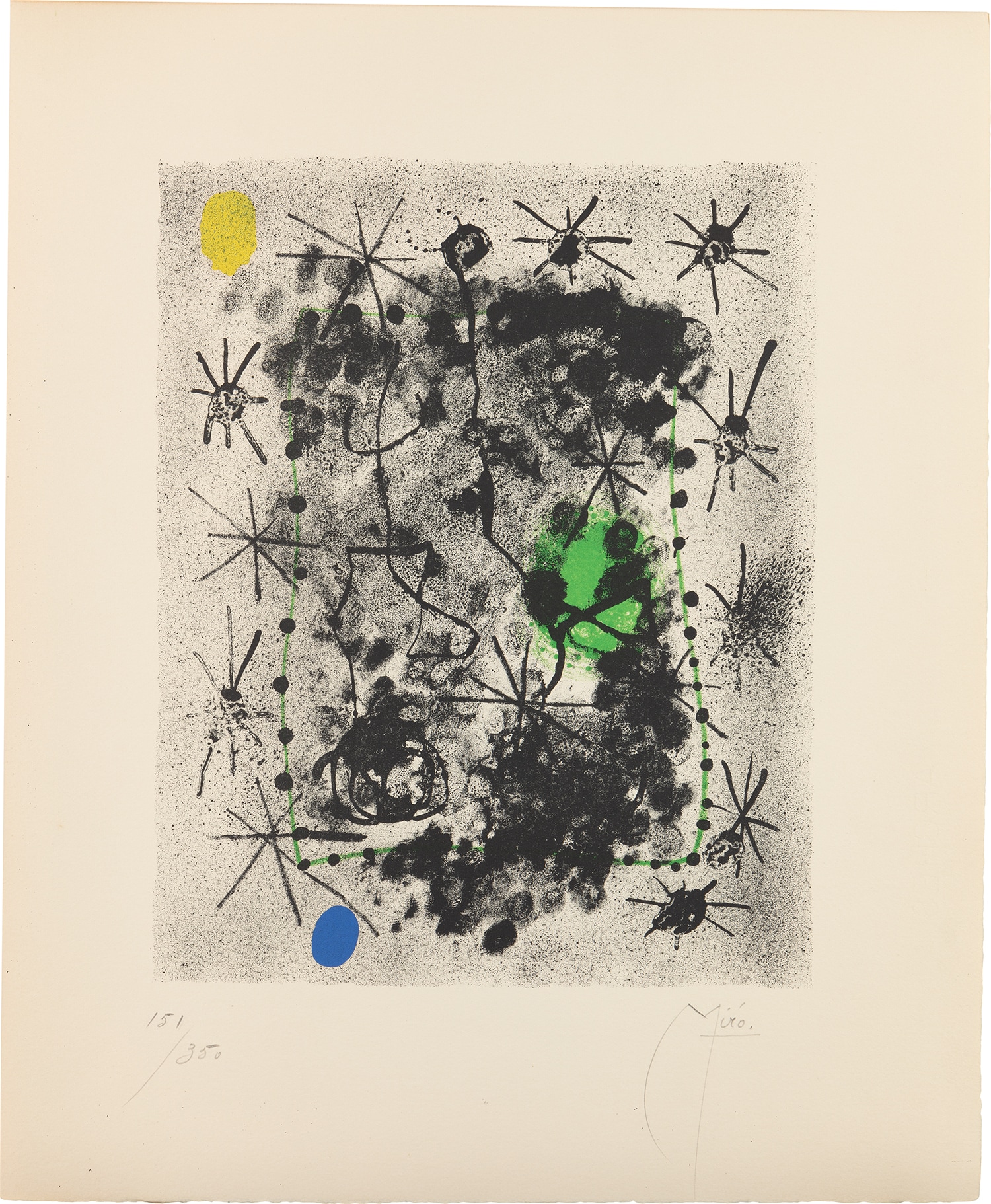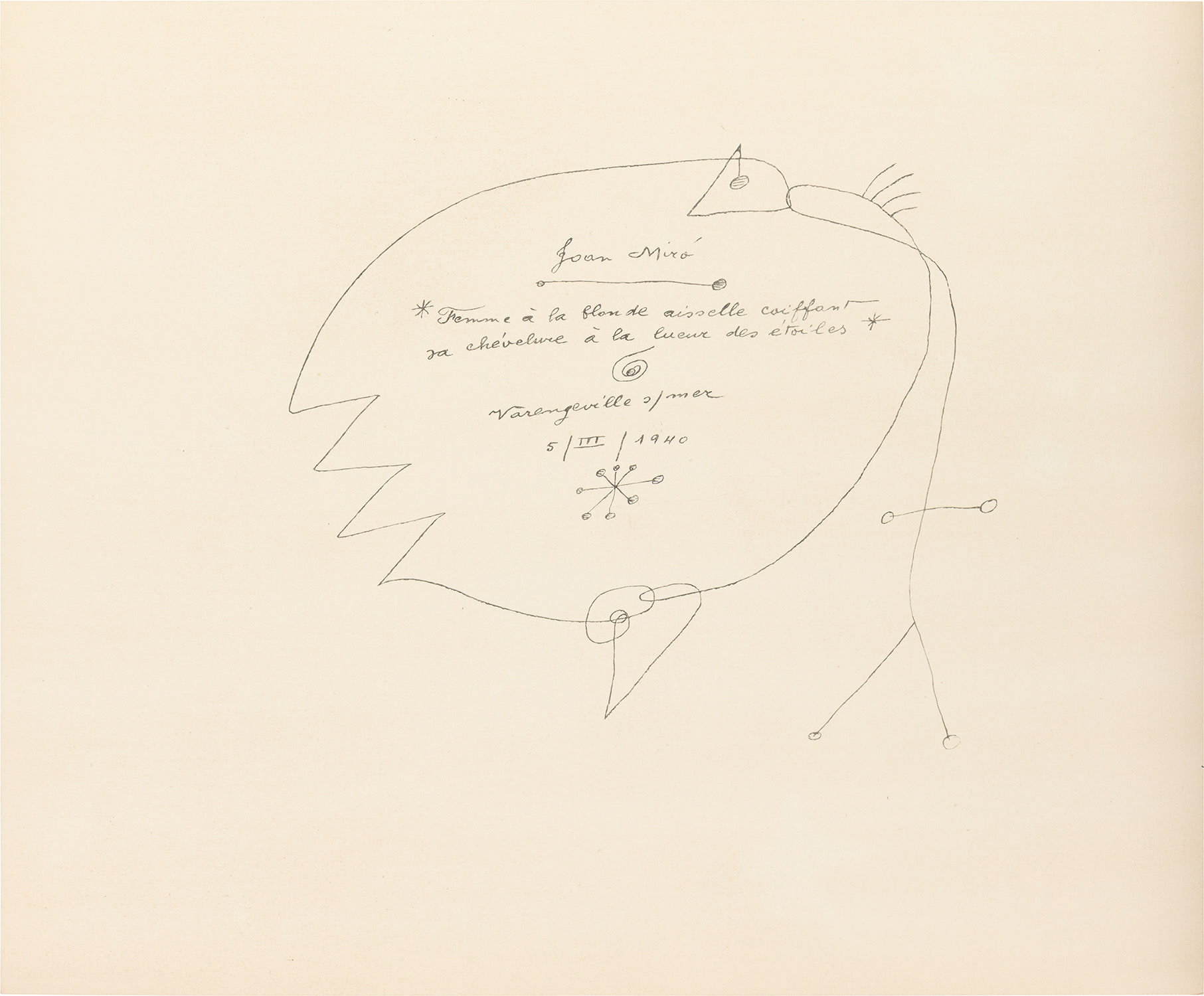









10
Joan Miró
Constellations (M. 260, C. bks 58)
1959
The set of one lithograph in colors and 18 pochoir reproductions in colors after gouaches by the artist (lacking plates 11, 17, 20 and 22), on Arches paper, with full margins and the full sheets, with title page, text in French by André Breton, table of contents and justification, loose (as issued), with the original paper folio printed in colors and the title in black on the front, the prints contained in original paper folios, all contained within the original beige canvas-covered portfolio.
lithograph I. 11 3/4 x 9 1/4 in. (29.8 x 23.5 cm)
all approx. S. 14 1/8 x 17 in. (35.9 x 43.2 cm)
portfolio 16 5/8 x 15 x 2 in. (42.2 x 38.1 x 5.1 cm)
all approx. S. 14 1/8 x 17 in. (35.9 x 43.2 cm)
portfolio 16 5/8 x 15 x 2 in. (42.2 x 38.1 x 5.1 cm)
Signed by the artist in blue ink and the author in red ink on the justification page and numbered 151 (printed), the lithograph signed and numbered 151/350 in pencil (there were also 22 in Roman numerals and 12 hors commerce copies), printed by Mourlot Fréres and Atelier Lacourière et Frélaut, Paris, published by Pierre Matisse, New York.